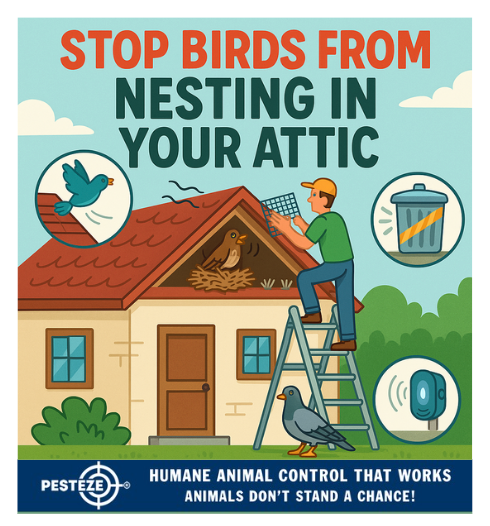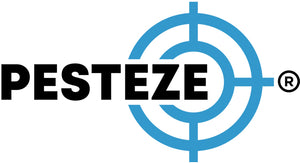HOW TO STOP BIRDS FROM NESTING IN YOUR ATTIC

HOW TO STOP BIRDS FROM NESTING IN YOUR ATTIC
SUMMARY
Birds nesting in your attic may seem harmless at first, but it can lead to serious problems such as structural damage, noise disturbances, and health risks from droppings and parasites. This guide explains proven strategies to keep birds out of your attic, protect your home, and maintain a safe environment.
FEATURES
-
Identify entry points: Find and seal gaps, vents, or cracks that allow birds inside.
-
Install bird deterrents: Use spikes, netting, or wire mesh to make entry points inaccessible.
-
Use sound and light repellents: Scare devices like ultrasonic sound emitters or reflective tape deter birds naturally.
-
Keep food sources away: Secure trash bins and avoid leaving pet food or seeds near your home.
-
Apply professional-grade sealants: Durable sealing materials prevent re-entry after nests are removed.
-
Seek humane removal: If birds are already inside, use licensed professionals to safely relocate them.
GUIDE DESCRIPTION
Birds often choose attics as nesting sites because they provide shelter, warmth, and safety from predators. While this may seem harmless, the reality is that bird nests inside your attic can create a host of problems. Their droppings are not only unsightly but can also spread diseases such as histoplasmosis. In addition, nesting materials like twigs, leaves, and feathers can block ventilation, damage insulation, and even create fire hazards if they come into contact with electrical wiring.
The first step to preventing birds from nesting in your attic is identifying how they enter. Common entry points include roof vents, soffits, eaves, and gaps around chimneys. Conduct a thorough inspection of your attic and roofline, especially during early spring when birds are most active in nest building. Once identified, seal these openings with durable materials such as steel mesh or hardware cloth to ensure birds cannot squeeze through.
Installing bird deterrents is another effective strategy. Bird spikes placed along rooflines or ledges prevent birds from perching near potential entry points. Netting and screening are particularly useful for blocking attic vents or open gables while still allowing airflow. Reflective deterrents, such as aluminum foil strips or commercial scare tape, can also discourage birds by creating visual confusion.
For homeowners looking for non-invasive solutions, sound and light repellents are an option. Ultrasonic devices emit frequencies unpleasant to birds, while strobe lights or motion-activated lights create an environment that discourages nesting. However, these methods work best when combined with physical barriers.
It’s equally important to reduce attractants. Avoid leaving food sources, like pet food or bird seed, near your home. Secure garbage bins with tight-fitting lids and keep compost piles properly covered. Removing these attractants makes your attic less appealing.
If birds are already nesting in your attic, never attempt to remove them without care. Many species are protected by law, and disturbing nests with eggs or chicks can be illegal. In such cases, consult a licensed wildlife control expert to ensure safe and humane removal. Once the attic is cleared, clean and disinfect the area before sealing entry points to prevent future infestations.
By combining prevention, deterrents, and humane removal practices, you can keep your attic bird-free, protect your home, and avoid the long-term risks of unwanted nesting.
OTHER TIPS
-
Schedule seasonal roof inspections to catch issues early.
-
Consider installing vent covers designed specifically for bird prevention.
-
Keep tree branches trimmed away from your roof to reduce access points.
-
Use eco-friendly deterrents like natural bird repellent sprays for added protection.
CONCLUSION
Birds may be persistent, but with the right prevention strategies, you can stop them from nesting in your attic. By sealing entry points, using deterrents, and working with professionals when necessary, you’ll keep your attic safe, clean, and free of unwanted avian guests.
- saneeth thota


Comments 0